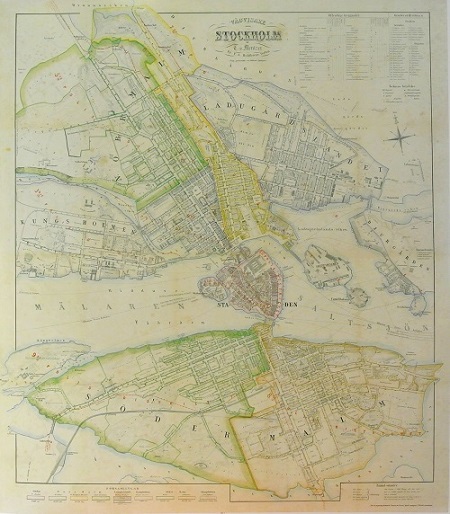Kopparstickare som 1704 på uppdrag av tsar Peter utförde ett kopparstick av en karta över Kexholms län - Ingermanland som renritats av lantmätaren A. Andersin.
Född 1737, Auxerre, Frankrike. Död 19 mars 1804 i Stockholm.
Född 1737 i Auxerre, Frankrike, död 19 mars 1804 i Stockholm, var en fransk arkitekt, målare, och grafiker, verksam i Sverige. Desprez föddes i staden Auxerre i Burgund 1737. Han studerade till arkitekt och vann 1770 stora priset i Académie d'architecture i Paris. Han var då 'professeur de dessin à l'école royale militaire'. Senare fick han understöd av franska konstakademien och gjorde flera resor i Italien.
Desprez kom till Rom 1777 i egenskap av arkitekt och fransk konststipendiat. Han hade två gånger blivit prisbelönad vid byggnadsakademien i Paris, första gången för ett ståtligt och invecklat gravtempel, andra gången för 'ett slott för en hög herre'. I Rom började han att pliktskyldigt studera och avrita de antika byggnadsminnena. Han gjorde sig snart känd som en skicklig och fantasirik avtecknare av kyrkor och ruiner och som en mångsidig talang, etsare, akvarellist och även målare i olja. Den franske målaren Joseph Marie Vien kallade honom 'en ung man full av eld och snille'. Desprez hade knappt bliv...
1750-1836.
Engelsk kartförläggare som övertog Thomas Jeffreys (se denne) affär och gav ut en lång rad med anmärkningsvärt fina kartor, glober, stadsplaner, atlaser etc. En katalog från Faden, tryckt 1822 registrerar över 350 publikationer. Till hans mest värdefulla verk räknas 'North American Atlas' (1777). 1798 gav han ut 'Atlas minimus universalis' med 55 kartor. I övrigt utförde han ingen standardatlas, men satte samman enkla kartor till atlaser efter olika beställares önskemål. Samlingarna blev försedda med tryckta titelblad, men varierar stort beträffande innehåll och storlek.
Bland arbeten.
North American Atlas.
Atlas minimus universalis.
Phillips. - Tooley.
Stockholm - Mentzer ca 1860.
Tjäder, höna med ägg - Olof Rudbeck d.y.
Olaus Magnus text till den berömda kartan "Carta Marina".
Texten finns även på katalanska, spanska och engelska.
Bureus karta över norden
Kartor och atlaser
Bilder och planschverk
Teckenförklaringar
The old economic map
in the Region of Mälaren.
In connection with the enclose process (“laga skifte”) it was recommended
that a summary of the maps to generalized representation of whole parishes be
produced. This work was much furthered by the order that the parish maps could
serve as a sort of qualification works for surveyors. Summaries of the
enclosure maps were also put together as framework (“stomkartor”) both for
the topographic maps and for the economic maps that were drawn for "härad"
districts that consists of a group of parishes. The economic "härad"
maps were printed in the scale of 1:50 000 beginning with the maps of the
"härad" of Uppsala county (“län”) 1860. The economic maps of
Uppsala, Stockholm, Södermanland and Västmanland counties are here analyzed
as to their reliability as sources for geographical studies by means of a
comparison between the printed maps, the field maps (e.g. the revised "stomkartor")
and the underlying enclosure maps. The descriptions (“beskrivningar”)
belonging to the economic maps have been compared with official statistics
from the same years, if possible. As a result it can be said that the old
economic maps are well done and the field checking was very carefully
performed. Consequently the maps in question give a very fine synchronous view
of the regions. They should be more used by geographers, historians and
statisticians. Unfortunately all Sweden does not possess such maps.



